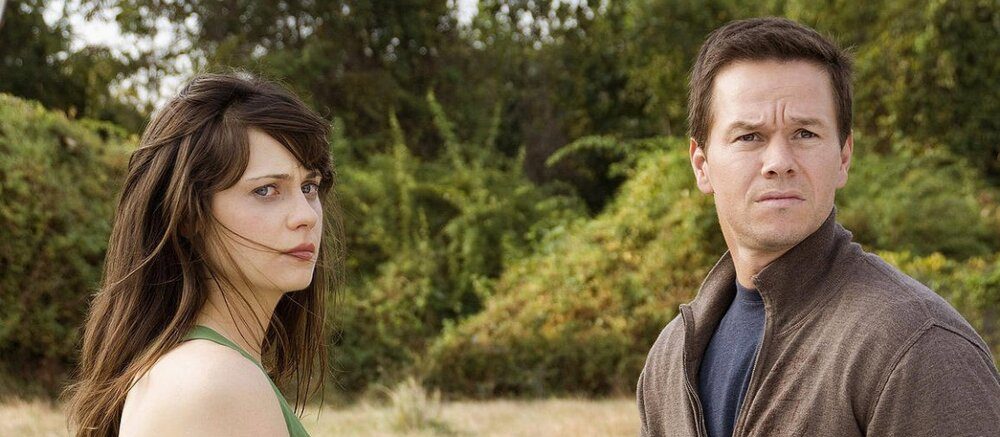
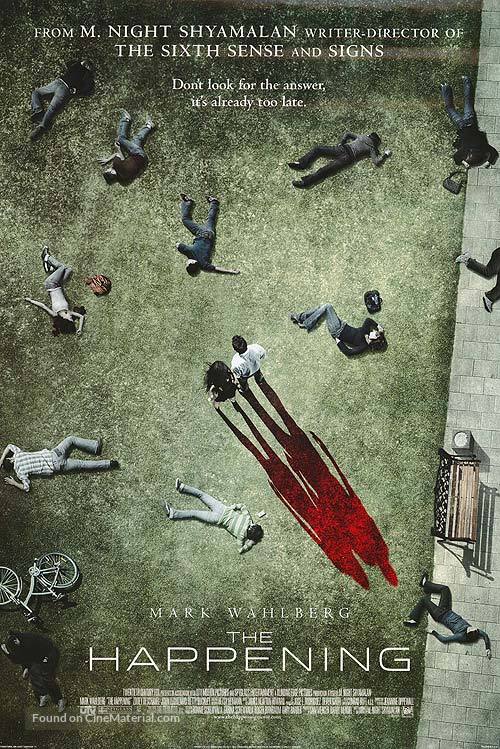
“I forgot where I am.”
The critical failure of The Happening has more to do with preconceived notions and its director’s reputation than the movie itself. You see, there was a brief period of time where M. Night Shyamalan was the golden boy of the mainstream, a personal filmmaker whose whimsies momentarily aligned with popular taste. This earned him a great deal of goodwill from critics, and he followed his breakout smash hit The Sixth Sense with two more generally well-liked efforts, Unbreakable and Signs. But around the time of The Village, he’d been pegged as a one-trick pony. His one trick, of course, was the big plot twist. General audiences love the twist, but critics who closely follow individual filmmakers found his reliance on them to be gimmicky. And so even though his films have remained commercially viable, he’s become something of an industry pariah.
Unfortunately, because of the perception that he had artistically peaked and could now only produce self-parody, The Happening was released to a predetermined critical consensus. It earned Shyamalan and Mark Wahlberg a few Golden Raspberry Awards and found itself on several “worst of all time” lists. The film’s downfall is that it avoids the familiar Shyamalan formula. It doesn’t develop a rising sense of tension that one might expect because it features two tonally distinct projects grafted together—it’s a conventional genre film shot through with subversive deadpan comedy. If you ignore the latter element, as many critics did, the former will strike you as an incomprehensible blob of silliness. But worse still, if you fall for Shyamalan’s gargantuan red herring—basically a fake twist—you’re bound to dislike the film as a whole.
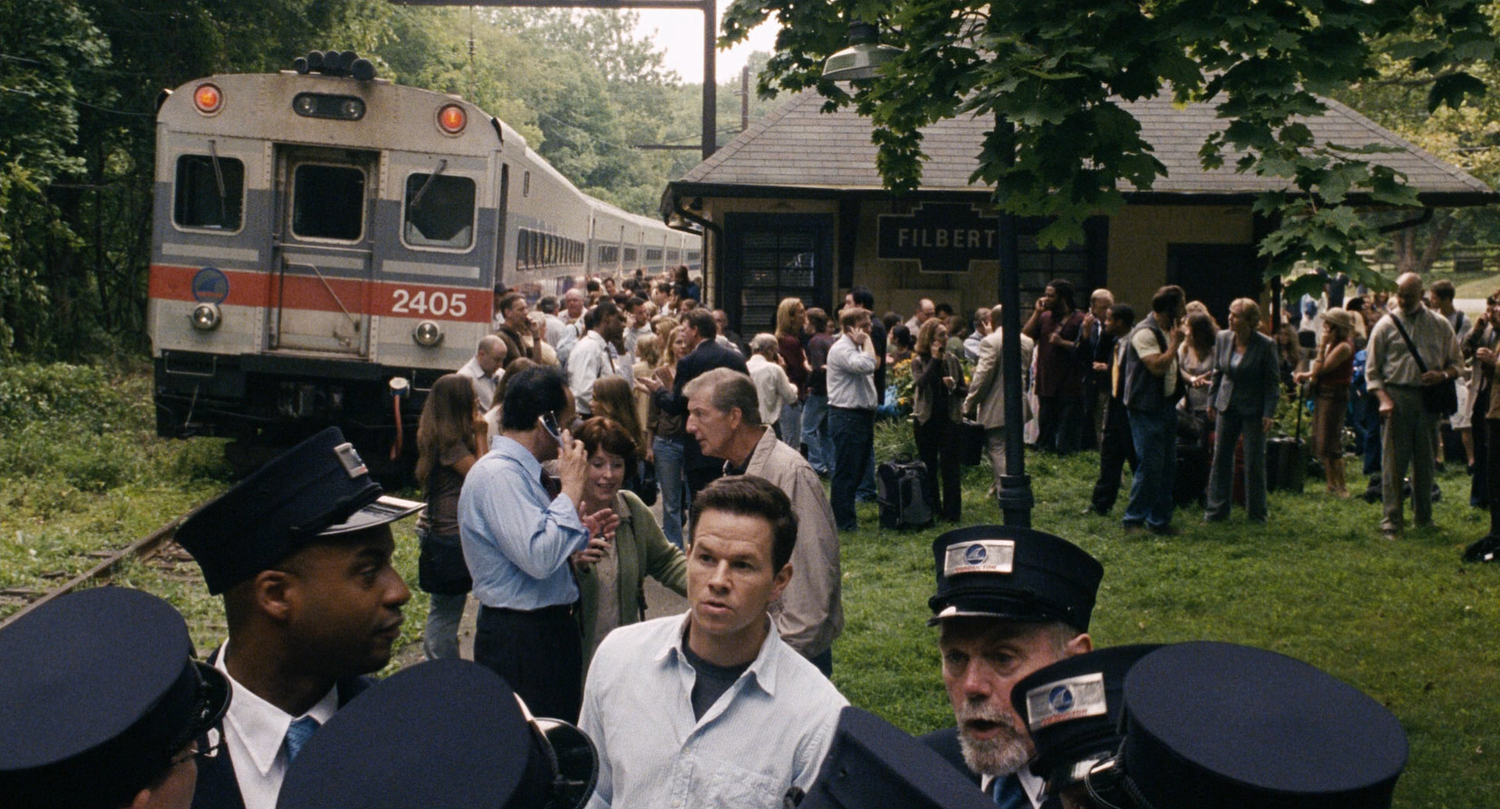
Anyway, the conventional frame story is about an airborne neurotoxin that causes its victims to quickly fall into a suicidal state. This phenomenon takes center stage right from the start when a mass of people in NYC’s Central Park stop moving in unison, begin walking backwards, and then proceed to take turns killing themselves in increasingly grisly fashion. (Make note: this is Shyamalan’s first R-rated movie. Although it doesn’t make full use of the relaxed boundaries, my wife found herself averting her gaze and plugging her ears on several occasions. Lawnmowers, tigers vs. zookeeper, ropes and ladders, etc.) Soon, there are happenings happening all over New York. Fearing that terrorists are targetting major cities, Elliot Moore (Wahlberg), a high school science teacher in Philadelphia, boards a train with his wife Alma (Zooey Deschanel), his best friend Julian (John Leguizamo), and Julian’s daughter Jess (Ashlyn Sanchez). Aboard the train, they learn of attacks in other major east coast cities. After losing communications, the train soon comes to a stop in a Pennsylvania town in the middle of nowhere, somewhat shifting the film into the realm of folk horror.
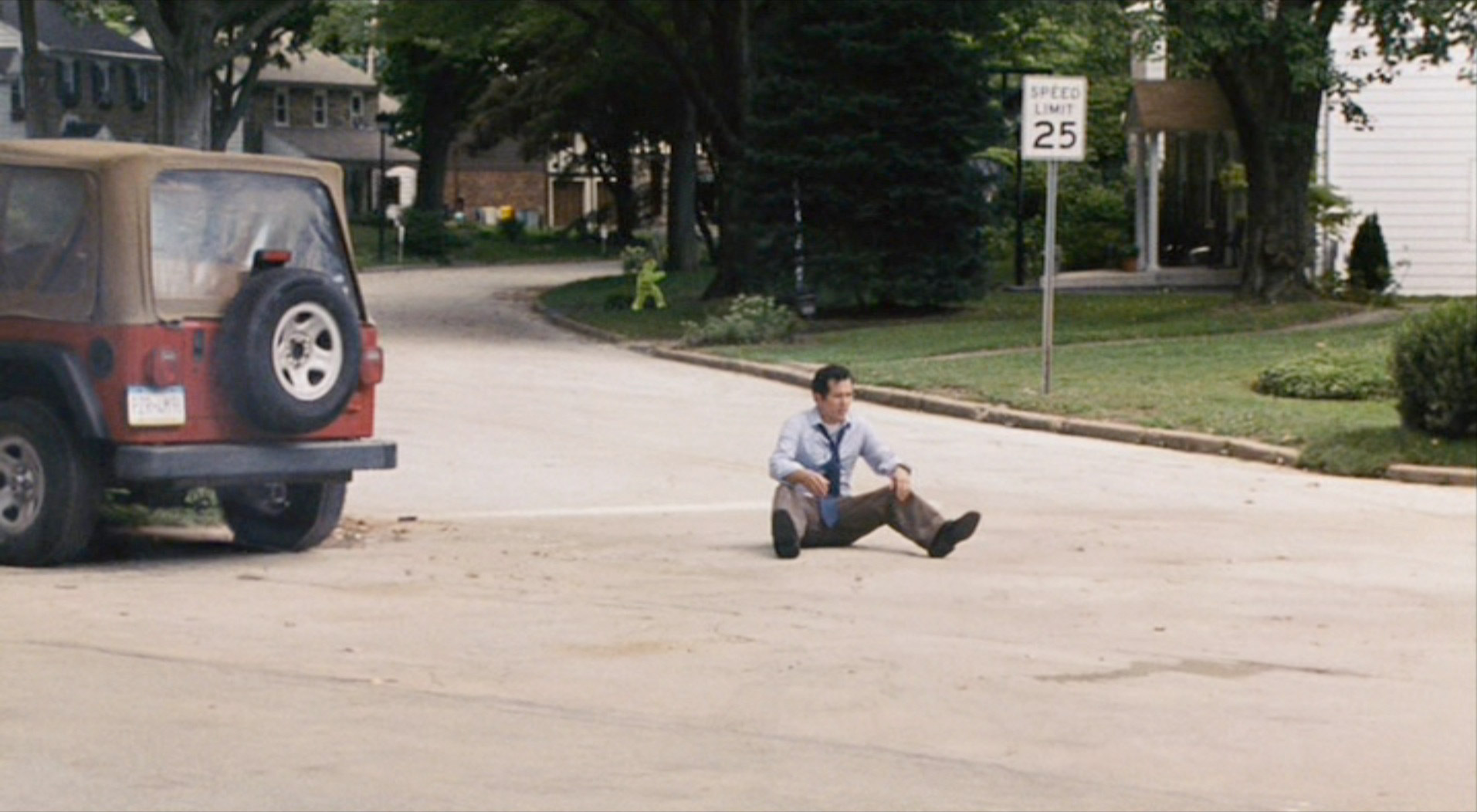
As with Signs, The Happening evokes a strong sense of panic rippling across the population via stray bits of communication from radios, newscasts, and frantic cell phone calls. Shyamalan proves adept at tantalizing viewers with his gore—favoring brief glimpses over lingering shots of blood and guts. For instance, there’s a brilliant shot where he places the camera just above street level and keeps it horizontal as three people use the same gun to claim their own lives. Their feet, their slumped bodies, and the gun (when it’s dropped) are shown within the frame, while the worst of the violence occurs off screen. But even though there is a visual restraint, the picture Shyamalan paints is bleak, hopeless, and unnerving. It has led at least one retrospective reviewer to consider the entire film as a metaphor for suicidal depression. Our characters try to find patterns in the chaos, but even the experts who blab out of the television set in the coda admit that it appears to be a random act of nature that we’ll never understand. And so these people, awaiting their own dismal fates, find themselves overwhelmed with existential dread. In a certain sense, it’s the anti-Signs, replacing that film’s providential hand with a chaotic absence of logic.
But even though Shyamalan adheres to the broadest expectations of an apocalyptic horror movie, he defies most of the rest. Consider the backwards pacing: the film begins with the pandemonium in Central Park, then slows down to a quiet, lethargic anticlimax in which the remaining survivors are simply waiting for the toxin to claim them. Take the odd casting of Wahlberg—whose macho presence suggests a Roland Emmerich style disaster film—as a nerdy science teacher who speaks in a squeaky voice that renders every statement a question. As the main character, Elliot’s arc is also inverted as he gradually becomes more inept and incapable of exerting situational control. The overwhelmed Private Auster (Jeremy Strong) is the opposite of the military assertiveness of standard genre fare.
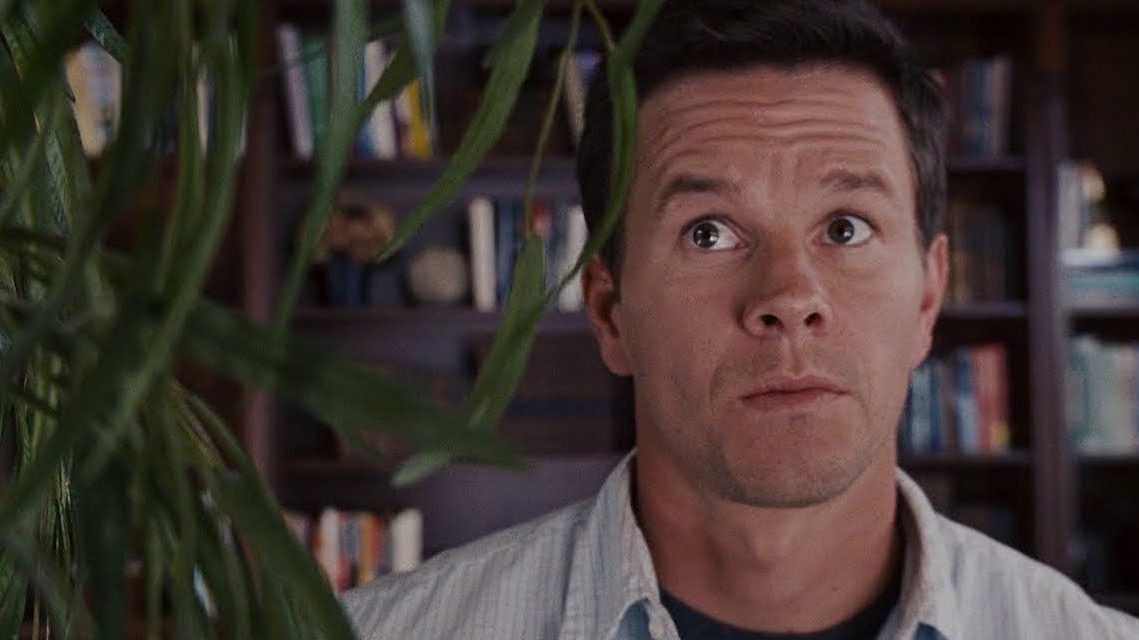
There are also numerous instances where the dialogue is almost off-the-rails hilarious, where the only other option is to read it as simply bad. Shyamalan challenges the viewer because his shifts are erratic and short-lived, interspersed with a central horror story that provides genuine chills. For instance, there’s the infamous scene where Mark Wahlberg finds himself trying to soothe a houseplant because a plant nursery owner had suggested earlier that the plants are fighting back against humanity by evolving this toxic substance. After a few tender words Elliot touches the plant and realizes it is made of plastic. Another comedic interaction involves Elliot and Alma confessing their tiniest infidelities to one another because they think they’re about to die: Alma had gone out for tiramisu with a coworker; Elliot had almost purchased a bottle of cough syrup just so he could talk to a cute pharmacy store clerk. “I’m talking about a completely superfluous bottle of cough syrup, which costs like six bucks,” he says. “Are you joking?” Alma asks. He nods.
But perhaps the biggest misconception is that the patented Shyamalan twist in The Happening is lame. The truth is that the “twist” is simply a giant MacGuffin, if not a total red herring. Frank Collison’s nursery owner—who provides some great comedy of his own when he gets hung up on convincing his fellow survivors that hot dogs are the most perfectly shaped food—suggests very early in the film that it is plants, not terrorists, that are causing the mayhem. When another explanation fails to materialize, Elliot works off of this wild postulation as if it was certainly true, expanding it to posit that the trees dislike large groups. Though the origin of the neurotoxin is never explained, there are more than enough clues to suggest that it is fear, not group sizes or sentient trees, that attracts the neurotoxin and leads to suicidal thoughts. This would align it with the “ghosting” concept in After Earth. Youtuber WhatisAntiLogic? suggests that one can view Signs, The Happening, and After Earth as a loosely-linked trilogy—an interesting theory, but I’m not sure I’d go that far.
While I think it is worthwhile to offer an apology for Shyamalan’s film, to defend it against the worst of its detractors, it is no masterpiece. The two disparate tones that he strives for are not exactly incompatible, but his film is proof that they’re difficult to balance, especially if one chooses to refrain from winking at the audience to let them know it’s all a big joke. In a sense, The Happening is too clever for its own good.